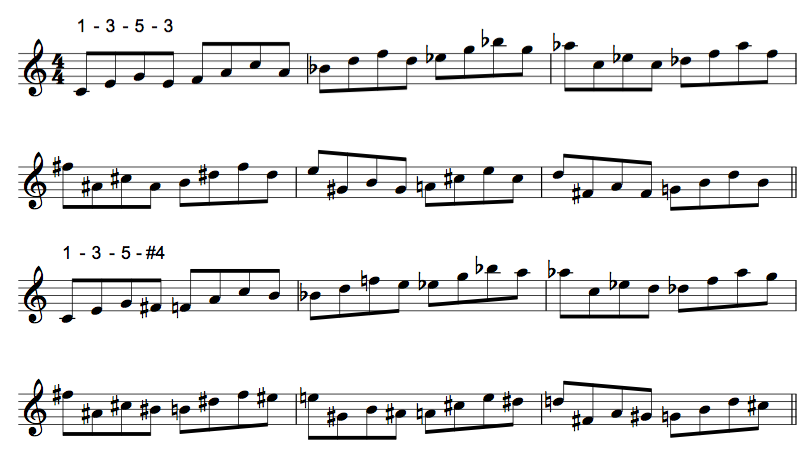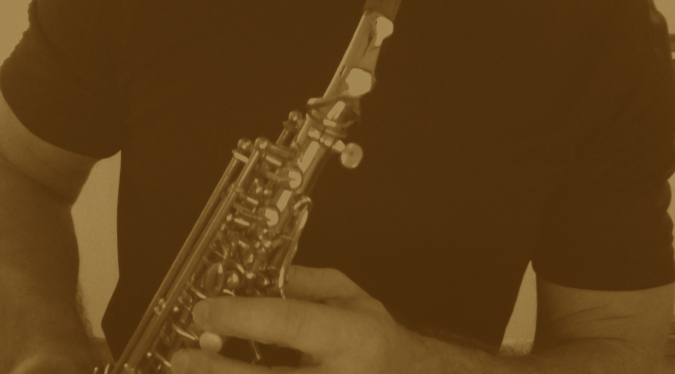I’ve had the good fortune of being able to teach the Alexander Technique to some very highly skilled and highly accomplished musicians, including various members of world-class orchestras and chamber ensembles, as well as some of Los Angeles’ finest studio musicians.
Though all of these artists are diverse and unique with the skills they possess, I can’t help but notice certain commonalities they seem to share. I’ve grown to believe that some of these traits are at least partly responsible for their success.
One of these common values has to do with practice strategies. More particularly, how their practice strategies relate to their musical vision and ultimately, their goals.
Here’s something one of my Alexander students (a highly accomplished brass instrumentalist) said about this topic:
“I knew from a fairly early age that I loved playing music and this was what I was going to do with my life. From that point on, I had a clear, very specific vision of the kind of musician I wanted to be. And it was from that point on that everything I practiced I chose specifically to bring me toward that vision. “
Think about that for a moment.
It sounds simple, and it is. Yet it has deep implications.
My student went on to say:
“It’s for that reason that I never practiced too many of those ‘seemingly generic fundamentals’ on a daily basis, which some of my fellow musicians were doing religiously. Sure, I worked on fundamental things like my sound, and technical challenges specific to my instrument. But even with these things it was always with two specific questions in mind:
“How does practicing this lead me to my particular, ultimate artistic goals?”
“What can I measurably accomplish (or at least aim to accomplish) when practicing this today?”
And if you ask him, that’s one of the key ingredients of his success.
When I consult as a practice coach, I often encounter musicians who are frustrated with their progress. A good deal of this frustration is because they don’t have the kind of clarity about practicing that my Alexander Technique student describes above.
Many of these musicians are spending a much too large percentage of their practice time on these “seemingly generic fundamentals”, with no specifically detailed end in mind.
(Now, to be clear here, I am very much a big fan of practicing the ‘fundamentals’. But without specificity, fundamentals turn into a proverbial “ocean” of misdirected energy.)
With some of these musicians, it seems to be an act of blind faith: “As long as I do this everyday, good things will magically happen in my musical progress.”
But it takes more than that:
“It takes the ability to stay present each moment with what you’re doing when you practice, always being vigilant that it is moving you toward your goals in a measurable, progressive manner”, to once again quote my Alexander student.
And this is the fundamental skill and strategy I help these musicians with.
As I ask them questions about their practice, I hear very little talk of certainty, direction and precision in what they choose to practice. Lots of ‘generic’ things, often more mechanical than artistically practical (such as running up and down scales in the same rhythmic patterns day after day, month after month).
They often can’t give me a compelling reason for why they do what they do, other than saying that it’s “fundamental”, and/or, that “so and so” (well-respected musician) “recommends doing it every day.”
There are two qualities missing in their practice strategies: Clear intention (their ultimate goals) and curiosity. The clearer you are about what you want as a musician, to more curious you become about what you need to do to get it.
So if you feel that you are drifting in this ‘ocean’, maybe it’s time to reassess what you’re doing, and redirect your efforts. Here are a few things to consider:
- Be willing to change. It has to start here. To paraphrase Einstein, “No problem has ever been solved by the same consciousness that created it.” Get ready to do things differently, perhaps even uncomfortably so (at least at first).
- Become clear about the kind of musician you wish to become. Have a vision. Dream big. It’s fine if this vision changes (likely that it will, a bit), but at least you have something to inform your practice and study efforts. Allow time to reflect upon this.
- Ask yourself what specific skills you would need to realize your vision. Think about it for a good amount of time. Make a very detailed list.
- Assess your current skills and current practice routine with respect to your list. What are you already doing that’s helping you reach your goals? What are you currently practicing that isn’t leading you toward those goals in a more specific way? (In other words, what can you eliminate from your daily practice routine?)
- Develop a strategy. Set small, attainable goals. Break the big things down into smaller things. Be methodical, progressive and persistent.
- Organize your efforts. Keep a practice journal. Use it daily, review it weekly. Keep a record of not only what you practice, but why. Include your thoughts and feelings about what you practiced. Make it an ongoing, dynamic dialogue with yourself.
- Reassess frequently. Your practice journal will help you keep it real here. What’s working? What’s not? What do you need more of? Less of?
- Constantly redirect your efforts. Not only on a weekly and/or monthly basis, but even within your practice day, and even within an exercise you’re practicing. Be present, clear and vigilant about your immediate goal and your ultimate goals.
- Seek help where you need it. An experienced, skilled outside source can really be a huge benefit. If you’re getting frustrated, don’t know where to start, or are confused, find somebody who can help. (I’ve helped lots of musicians find their way!)
In my experience, envisioning, planning and reassessing are never a waste of time where practice is concerned. As my brother (a highly skilled woodworker) says, “It’s always better to measure twice and cut once.” Give yourself some time to reflect and to dream and to modify what you do. You’ll find a whole new level of meaning, inspiration and satisfaction in your daily practice.





